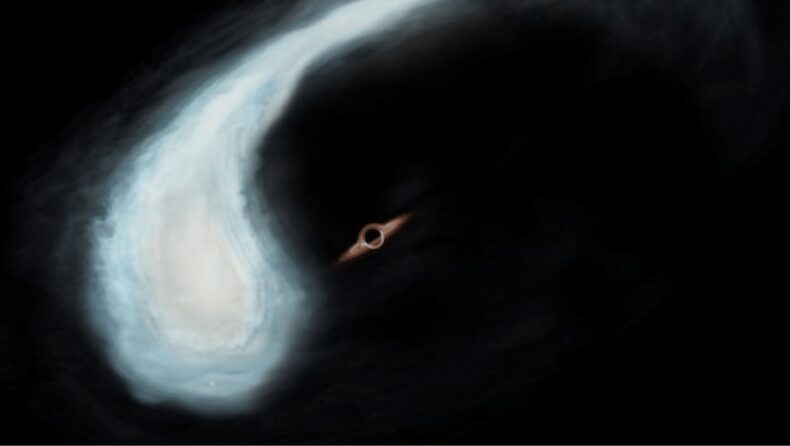- Scientists uncovered a mysterious cloud of gas in space resembling a tadpole.
A comma-shaped gaseous cloud was found near the Milky Way recently by astronomers. The mysterious cloud is orbiting around a dark space object. Scientists from Keio University, Japan, named the phenomenon “tadpole” on the way to finding out about strange objects.
Tadpole cloud formation
A team of astronomers observed specifically nothing at the Tadpole orbital center. Nothing implies something simply a “black hole.” Researchers reported that the black hole probably 100,000 times as large as the sun. The reason for the formation and movement of the Tadpole cloud is ongoing and will further reveale through upcoming observations.
The distinctive head-tail arrangement of the “Tadpole” in the position-velocity system makes it distinct from other gaseous clouds. Some studies have suggested that the lack of luminous equivalents and spatial uniformity of Tadpole at different wavelengths had resulted in an intermediate-mass black hole. It is also possible that the Tadpole could be stuck in the powerful tidal force because of the gravitational potential of the massive point body. Scientists are looking at the orbital arrangement of tadpole black holes to clarify distinctive black holes or other entities.
It is also well known that black holes cannot glow by themselves; whenever the holes encounter other elements, it can only be captured by the telescope. That is why the size, variation, and type of black hole in the Milkyway galaxy are unknown. Till now, Sagittarius A* is documented as a supermassive black hole. According to some scientists, black holes are gradually devouring the galaxy, but they believe Earth is exceptionally secure from its gravitational force in the future.

The discovery by astronomers
Miyuki Kaneko, a leading researcher from Keio University, Japan, in collaboration with Ibaraki University and National Astronomical Observatory had, conducted the research. So far, the analysis has been done by obtaining the raw files from the Nobeyama Radio Observatory and James Clerk Maxwell Telescopes. The first radio telescope functioned by the Nobeyama Radio Observatory, which belongs to the National Astronomical Observatory, Japan. The second Telescope is used by East Asian Observatory. The observatory collaboratively worked with the National Astronomical Observatory (Japan), Academia Sinica Institute of Astronomy and Astrophysics (Taiwan), the Korea Astronomy and Space Science Institute (South Korea), the National Astronomical Research Institute of Thailand (Thailand), and the Center for Astronomical Mega-Science (China).

The final verdict
The team recognized a rare molecular cloud 27,000 light years away from us in the constellation Sagittarius. The research work had published in The Astrophysical Journal. The publication designated the Tadpole as an “isolated and peculiar compactable cloud.” However, scientists may have substantial consequences for our knowledge of the supermassive range if it turns out to be an intermediate-mass black hole.













